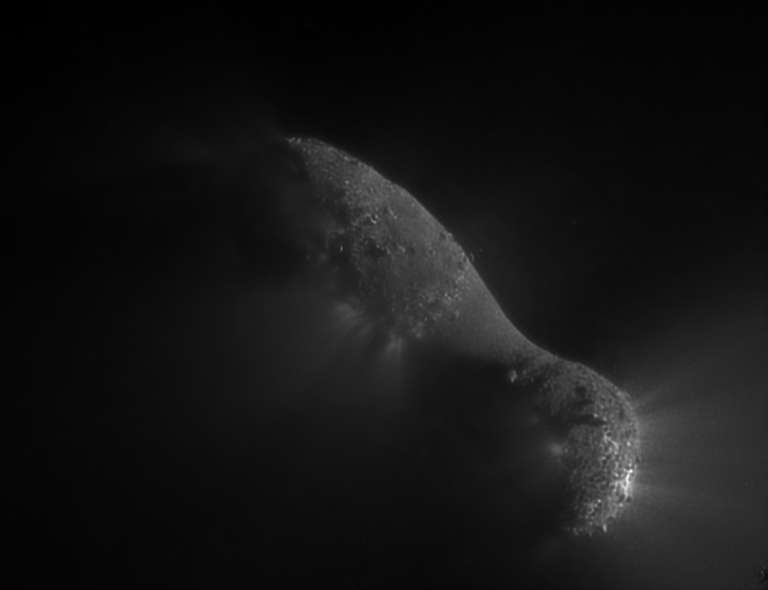Emily Lakdawalla • May 03, 2013
New Deep Impact Hartley 2 data set
I've spent a pleasant couple of hours playing with a new data set. This new data set contains images we've all seen before, taken by Deep Impact during its flyby of comet Hartley 2 in November of 2011. One of Deep Impact's cameras, the High Resolution Imager, had a defect that made its images blurry. The newly released data set is a "deconvolved" one, where they have attempted to correct for this blur. The deconvolution introduced some other artifacts -- there's no way to make these photos perfect -- but they are fun to play with nonetheless.
Here's the result of some late-night play with the image data. The original data was taken near closest approach.

Comet images are tough to process because you want to see the jets (they are comets, after all) but the jets are inherently fainter than the rest of the nucleus. If you stretch the contrast to reveal the jets, you often wash out detail on the nucleus. It's even more of a problem with these Hartley 2 photos because of all the artifacts. I can't say there was much science to my image processing method here -- it was just futzing around in Photoshop until something happened that I was pleased with. But maybe it's reproducible.
I left the original photo more or less in its original form, and created a copy on a second layer. I stretched the contrast in that copy, which brought out the jets but also brought out all the ringing artifacts from the image deconvolution. Then I applied a Gaussian blur to the copy, which removed the rings but also fuzzed the image considerably. Then I reduced its opacity, overlaying fuzzy jets onto the sharper image of the nucleus. This is definitely more art than science, but I'm happy with how it looks.
Let’s Go Beyond The Horizon
Every success in space exploration is the result of the community of space enthusiasts, like you, who believe it is important. You can help usher in the next great era of space exploration with your gift today.
Donate Today

 Explore Worlds
Explore Worlds Find Life
Find Life Defend Earth
Defend Earth

